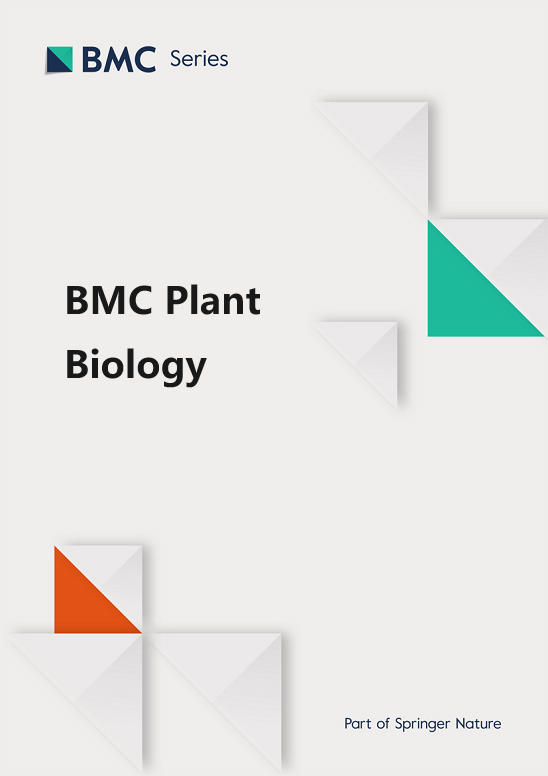Unveiling the role of epigenetics in leaf senescence: a comparative study to identify different epigenetic regulations of senescence types in barley leaves
IF 4.3
2区 生物学
Q1 PLANT SCIENCES
引用次数: 0
Abstract
Developmental leaf senescence (DLS) is an irreversible process followed by cell death. Dark-induced leaf senescence (DILS) is a reversible process that allows adaptations to changing environmental conditions. As a result of exposure to adverse environmental changes, plants have developed mechanisms that enable them to survive. One of these is the redirection of metabolism into the senescence pathway. The plant seeks to optimise resource allocation. Our research aims to demonstrate how epigenetic machinery regulates leaf senescence, including its irreversibility. In silico analyses allowed the complex identification and characterisation of 117 genes involved in epigenetic processes in barley. These genes include those responsible for DNA methylation, post-translational histone modifications, and ATP-dependent chromatin remodelling complexes. We then performed RNAseq analysis after DILS and DLS to evaluate their expression in senescence-dependent leaf metabolism. Principal component analysis revealed that evaluated gene expression in developmental senescence was similar to controls, while induced senescence displayed a distinct profile. Western blot experiments revealed that senescence engages senescence-specific histone modification. During DILS and DLS, the methylation of histone proteins H3K4me3 and H3K9me2 increased. H3K9ac acetylation levels significantly decreased during DILS and remained unchanged during DLS. The study identified different epigenetic regulations of senescence types in barley leaves. These findings are valuable for exploring epigenetic regulation of senescence-related molecular mechanisms, particularly in response to premature, induced leaf senescence. Based on the results, we suggest the presence of an epigenetically regulated molecular switch between cell survival and cell death in DILS, highlighting an epigenetically driven cell survival metabolic response.揭示表观遗传学在叶片衰老中的作用:识别大麦叶片衰老类型的不同表观遗传学调控的比较研究
叶片发育衰老(DLS)是一个不可逆的过程,随后细胞死亡。黑暗诱导的叶片衰老(DILS)是一个可逆的过程,可以适应不断变化的环境条件。由于暴露在不利的环境变化中,植物发展出了使其能够存活的机制。其中之一就是将新陈代谢重新导向衰老途径。植物试图优化资源分配。我们的研究旨在证明表观遗传机制如何调控叶片衰老,包括其不可逆性。通过硅学分析,我们对参与大麦表观遗传过程的 117 个基因进行了复杂的鉴定和特征描述。这些基因包括负责 DNA 甲基化、翻译后组蛋白修饰和 ATP 依赖性染色质重塑复合物的基因。然后,我们在 DILS 和 DLS 之后进行了 RNAseq 分析,以评估这些基因在依赖衰老的叶片新陈代谢中的表达情况。主成分分析表明,发育衰老中的评估基因表达与对照组相似,而诱导衰老则显示出不同的特征。Western 印迹实验显示,衰老过程中会发生衰老特异性组蛋白修饰。在DILS和DLS期间,组蛋白H3K4me3和H3K9me2的甲基化增加。H3K9ac乙酰化水平在DILS期间显著下降,在DLS期间保持不变。该研究确定了大麦叶片衰老类型的不同表观遗传调控。这些发现对于探索衰老相关分子机制的表观遗传调控很有价值,尤其是在应对过早的诱导叶片衰老时。基于这些结果,我们认为在 DILS 中存在一种受表观遗传调控的细胞存活与细胞死亡之间的分子开关,突出了表观遗传驱动的细胞存活代谢反应。
本文章由计算机程序翻译,如有差异,请以英文原文为准。
求助全文
约1分钟内获得全文
求助全文
来源期刊

BMC Plant Biology
生物-植物科学
CiteScore
8.40
自引率
3.80%
发文量
539
审稿时长
3.8 months
期刊介绍:
BMC Plant Biology is an open access, peer-reviewed journal that considers articles on all aspects of plant biology, including molecular, cellular, tissue, organ and whole organism research.
 求助内容:
求助内容: 应助结果提醒方式:
应助结果提醒方式:


